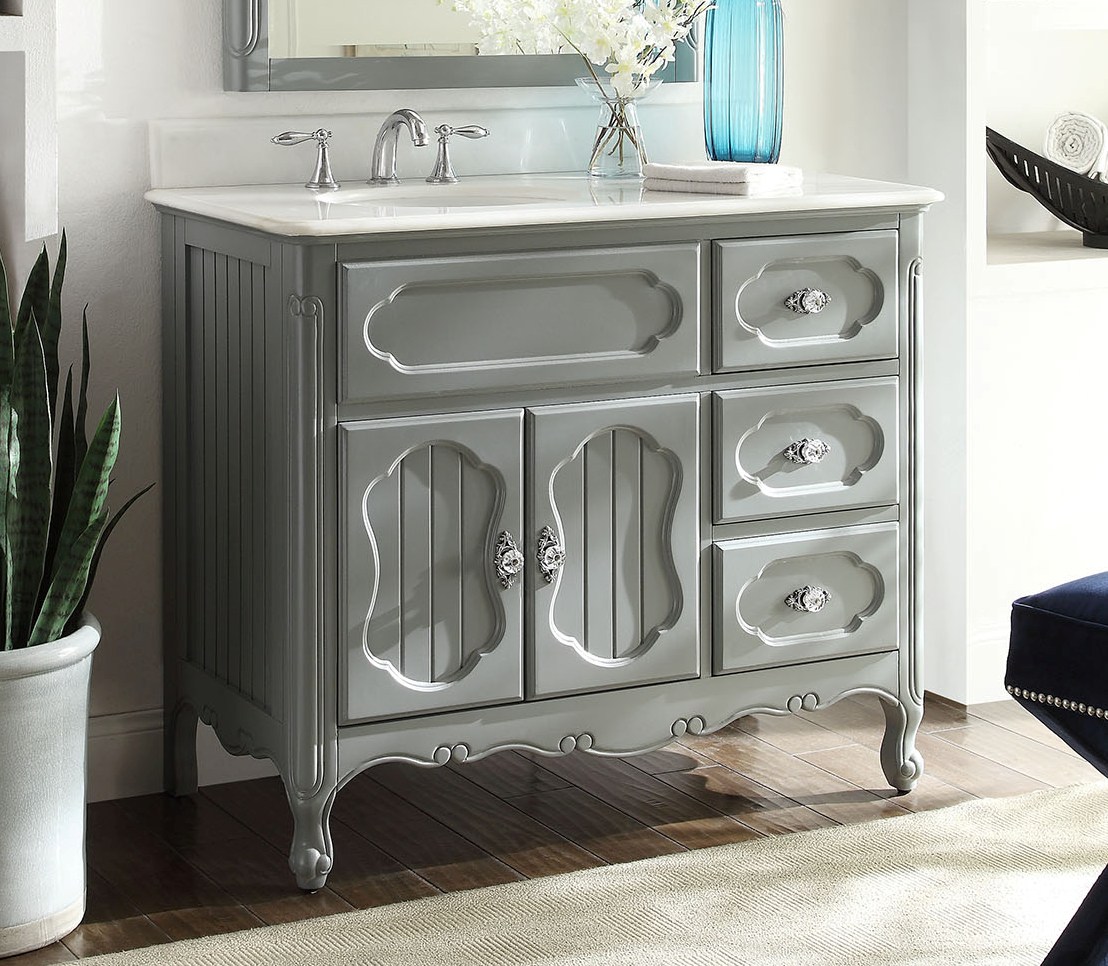History of the Vintage Vanity
Vintage vanities have been around for decades, dating back to the early 1900s. They were originally made of materials like porcelain, ceramic, and wood and featured ornate designs and decorative details. Over time, vanity styles evolved to reflect the trends of each decade. Some key points:
- In the early 1900s and 1910s, vanities were heavily influenced by the Art Nouveau and Arts and Crafts movements, featuring curved lines, floral motifs, and natural wood finishes.
- In the 1920s and 1930s, vanities took on an Art Deco style with geometric shapes, chrome accents, and sleek lines. Bakelite, an early type of plastic, was also used.
- In the 1940s and 1950s, vanities became more streamlined and minimalist to match mid-century modern design. Materials like laminate and chrome were popular.
- The 1960s and 1970s saw a return to more ornate vanities, often with curved shapes, wood veneers, and patterned finishes.
- By the 1980s and 1990s, vanities became more compact and functional, featuring lighter colors, square edges, and laminate surfaces.

Common Materials and Finishes
A hallmark of a vintage vanity is the fine materials and craftsmanship seen in its construction. Common materials found are wood, stone, metal, glass and ceramic. Woods like oak, mahogany and walnut were frequently used for their richness and natural grain patterns.
Elegant stone tops like marble, granite and slate provided a sturdy surface able to withstand water and cosmetics. Metals including wrought iron, brass and bronze adorned vanities in the form of bases, legs or hardware. Etched, beveled and stained glass was an elegant accent. Finally, ceramic tile and porcelain gave a gleaming white surface.
These materials were hand finished in a variety of techniques. Wood stains and lacquers emphasized the woods’ natural patterns. Painted finishes in shades of white, gray, blue and green were also popular. Metals were finished to highlight their luster through polishing, antiquing, or added gold leaf accents. The masterful use of materials is a key factor that makes vintage vanities treasures.
Vintage Vanity Styles Through the Decades
Tracing vintage vanities through different decades reveals how styles and designs shifted with the times. In the 1900s, the focus was on Victorian excess turned Art Nouveau elegance. 1920s vanities became smaller with geometric details. The 1930s-1940s saw simplified cottage and industrial styles emerge.
Key design elements from each era include:
1900s – Elaborate carved wood, marble tops, beveled mirrors, curved cabriole legs
1920s – Angular lines, glass and lacquer accents, fold-down mirrors, circular stool seats
1930s – Wood panels, painted finishes, wrap-around mirrors, storage draws and cubbies
1940s – Metal finishes, clean lines, built-in sinks, fluorescent lighting
Studying the nuances decade to decade provides inspiration and context when furnishing a space with a vintage vanity. Their age adds character that cannot be replicated in contemporary furnishings.
Incorporating a Vintage Vanity in a Modern Bathroom
The key to successfully incorporating a vintage vanity into a modern bathroom is ensuring cohesion. Blend old and new by carrying over materials, colors, shapes, or styles used in the vanity throughout the room. For example, pair a 1920s green-painted vanity with glossy rectangular wall tiles and brass fixtures. Or complement an ornate Victorian vanity with floral shower curtains and sconce lighting.
When combining a vintage vanity with modern sink fittings, select wall-mount or vessel sinks that sit atop the existing counter. This avoids altering the vanity cabinet itself. New hardware like sleek metal knobs can update the look, but stay true to the original style. Finally, proper lighting like pendant lights or Hollywood mirrors keeps the vanity functional. With thoughtful design choices, vintage vanities can feel right at home in contemporary bathrooms.
Vintage Vanity Storage and Organization Tips
While vintage vanities excel at providing beauty, their old-fashioned storage options may need some enhancement for modern needs. Here are tips to keep the space organized:
- Add shallow drawer organizers to corral small items like makeup, skincare and hair products
- Use hanging bags or bins on the back of doors to store toiletries and equipment out of sight
- Install modern lighting inside drawers to see contents better
- Place an acrylic cosmetics organizer tray on the countertop for every day items
- Use baskets or boxes to hold supplies like hair tools and accessories
- Mount hooks on the side or top of the vanity for hand towels or robes
With a bit of DIY ingenuity, vintage vanity storage and organization can be brought up to date while retaining the original charm. Proper storage helps keep the bath tidy and the vintage vanity looking its best.
Vintage Bathroom Vanities HGTV
Adelina 42 inch Antique Cottage Bathroom Vanity Grey Finish White
34u201d Cottage Look Daleville Bathroom Sink Vanity Model HF081-LB (Light Blue)
Related Posts:
- Build Your Own Bathroom Vanity Plans
- 12 Inch Deep Bathroom Vanity
- Thin Bathroom Vanity
- Bathroom Vanity Top Ideas
- 2 Sink Bathroom Vanity Ideas
- Can You Paint A Bathroom Vanity
- Bathroom Vanity Cabinet Storage
- Bathroom Vanity Lights And Mirrors
- White Oak Bathroom Vanity
- Bathroom Vanity Right Sink






